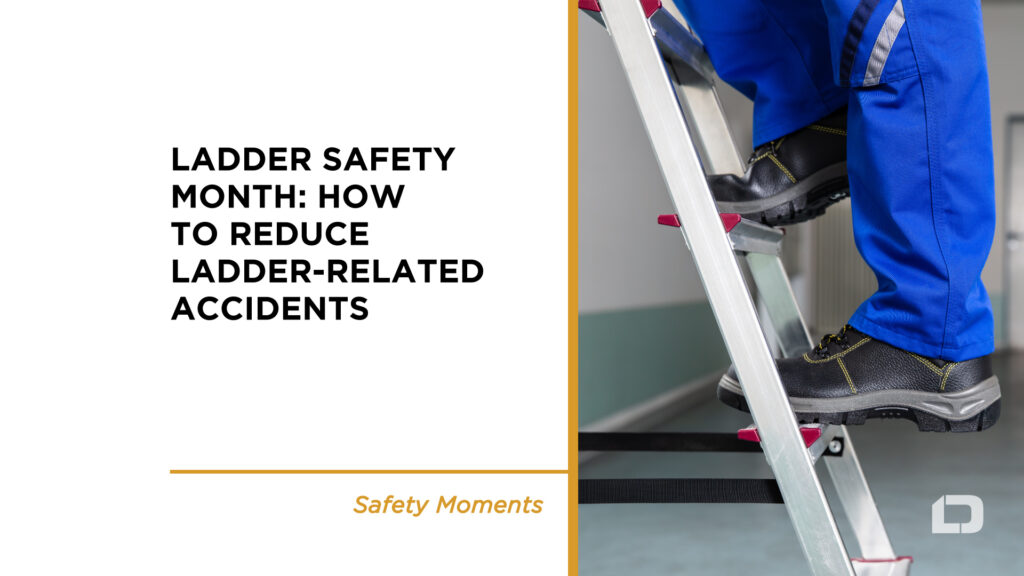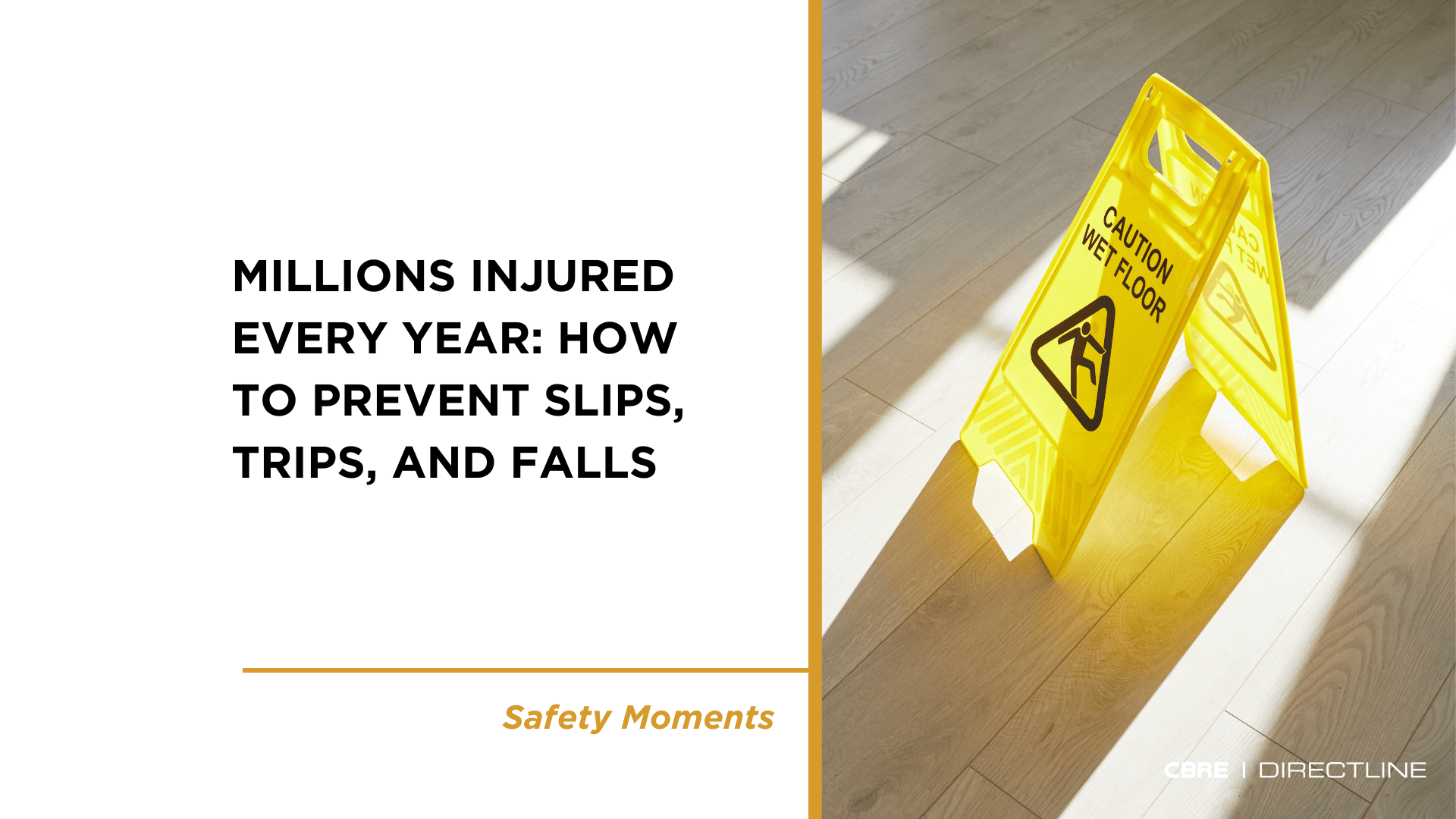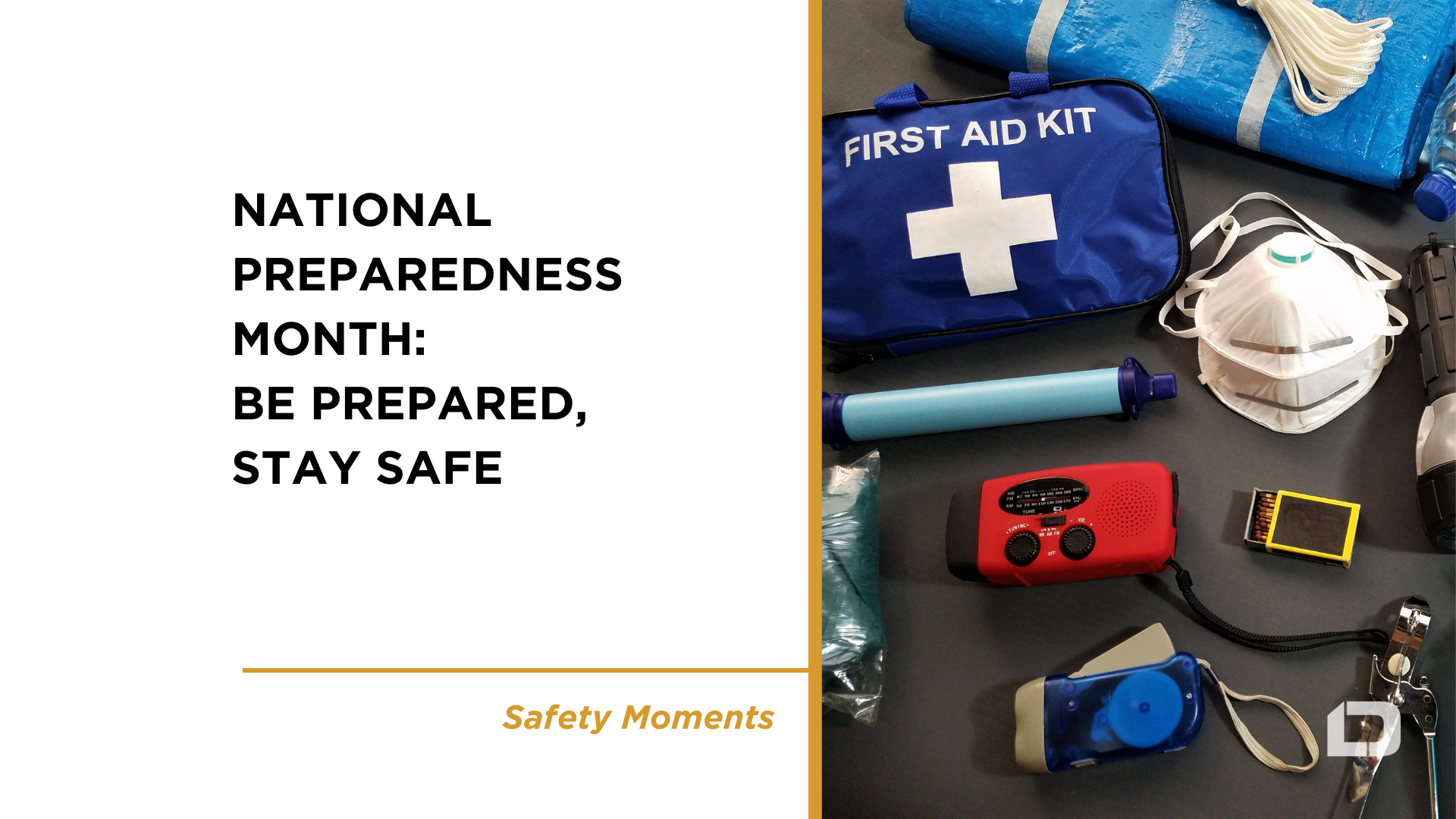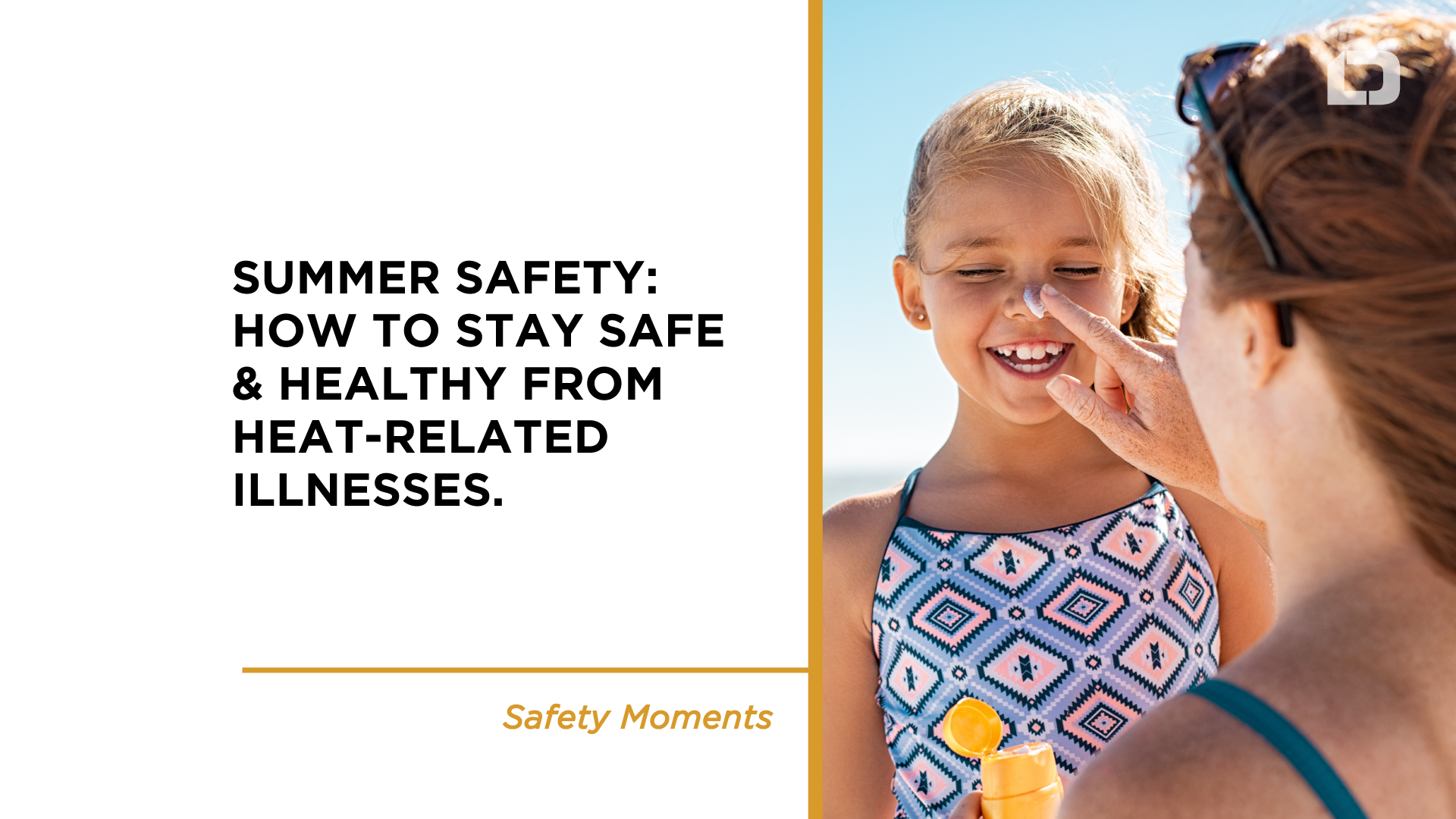This event was created to raise awareness of ladder safety and to decrease the number of ladder-related injuries and fatalities. National Ladder Safety Month aims to raise awareness of ladder safety, reduce injuries and deaths caused by ladder misuse, and increase the number of people certified in Ladder Safety Training.
5 Ladder Safety Tips
- Choose the right ladder & check the weight rating.
- Always inspect the ladder before using it.
- Make sure the ladder is stable before beginning to climb it.
- Make sure you stay stable as you climb a ladder.
- Do not carry items with you as you climb the ladder.
Portable Ladder Safety
Falls from portable ladders (step, straight, combination, and extension) are one of the leading causes of occupational fatalities and injuries.
- Read and follow all labels/markings on the ladder.
- Avoid electrical hazards! Look for overhead power lines before handling a ladder. Avoid using a metal ladder near power lines or exposed energized electrical equipment.
- Always inspect the ladder before using it. If the ladder is damaged, it must be removed from service and tagged until repaired or discarded.
- Always maintain a 3-point (two hands and a foot, or two feet and a hand) contact on the ladder when climbing. Keep your body near the middle of the step and always face the ladder while climbing.
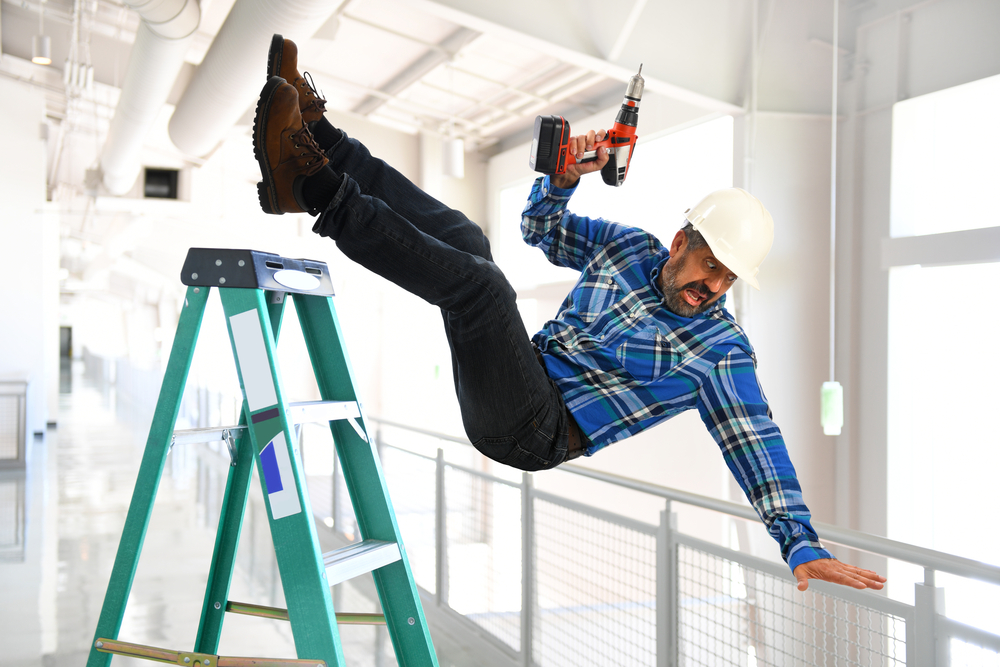
- Only use ladders and appropriate accessories (ladder levelers, jacks, or hooks) for their designed purposes.
- Ladders must be free of slippery material on the rungs, steps, or feet.
- Do not use a self-supporting ladder (e.g., step ladder) as a single ladder or in a partially closed position.
- Do not use a ladder’s top step/rung as a step/rung unless it was designed for that purpose.
- Use a ladder only on a stable and level surface unless it has been secured (top or bottom) to prevent displacement.
- Do not place a ladder on boxes, barrels, or other unstable bases to obtain additional height.
- Do not move or shift a ladder while a person or equipment is on the ladder.
- An extension or straight ladder used to access an elevated surface must extend at least 3 feet above the support point. Do not stand on the three top rungs of a straight, single, or extension ladder.
- The proper angle for setting up a ladder is to place its base a quarter of its working length from the wall or other vertical surface.
- A ladder placed in any location where other work activities can displace it must be secured to prevent displacement, or a barricade must be erected to keep traffic away from the ladder.
- Be sure that all locks on an extension ladder are properly engaged.
- Do not exceed the maximum load rating of a ladder. Be aware of the ladder’s load rating and the weight it supports, including the weight of any tools or equipment.
The Three Point-of-Contact Climb
Factors contributing to falls from ladders include haste, sudden movement, lack of attention, the condition of the ladder (worn or damaged), the user’s age or physical condition, or both, and the user’s footwear.
Although the user’s weight or size typically does not increase the likelihood of a fall, improper climbing posture creates user clumsiness and may cause falls. Reduce your chances of falling during the climb by doing the following:
- Wear slip-resistant shoes with heavy soles to prevent foot fatigue.
- Clean the soles of shoes to maximize traction.
- Use towlines, a tool belt, or an assistant to convey materials so that the climber’s hands are free when climbing.
- Climb slowly and deliberately while avoiding sudden movements.
- Never attempt to move a ladder while standing on it.
- Keep the center of your belt buckle (stomach) between the ladder side rails when climbing and working. Do not overreach or lean while working so that you don’t fall off the ladder sideways or pull the ladder over sideways while standing on it.
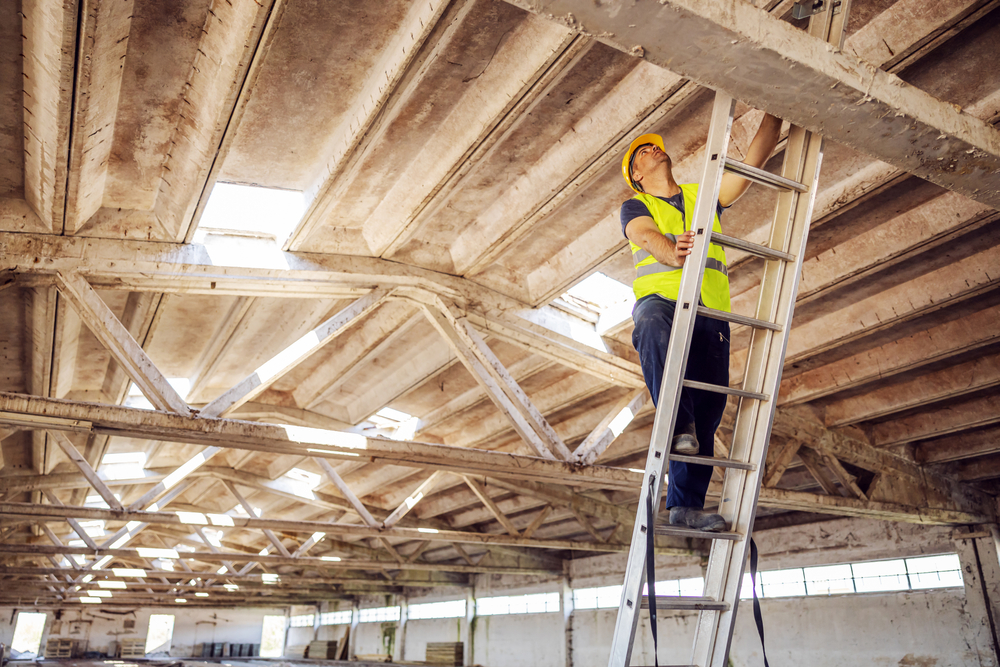
When climbing a ladder, it is safest to utilize Three Points-of-Contact because it minimizes the chances of slipping and falling from the ladder. During ascent, descent, and working, the climber must always face the ladder and have two hands, one foot or two feet, and one hand in contact with the ladder steps, rungs, and side rails. In this way, the climber is not likely to become unstable if one limb slips during the climb. It is important to note that the climber must not carry any objects in either hand that can interfere with a firm grip on the ladder. Otherwise, Three Points-of-Contact with the ladder cannot be adequately maintained, and the chance of falling increases if a hand or foot slip occurs.
Ladder Safety at Home
Changing light bulbs around the house? Trying to get that glass down from the top shelf in the kitchen? Ladders are constantly used around the home, and more often than not, they’re being misused.
Don’t let a simple task put you out of commission with a severe injury. Ladder injuries are more common than you think!
At Direct Line Global, we put constant emphasis on our Safety Culture. Our team members’ health and safety matter at all times. Learn more about our Safety posts on our website. Stay safe out there!
For more information visit these links:
National Institute for Occupational Safety and Health (NIOSH) Ladder Safety App: https://www.cdc.gov/niosh/topics/falls/mobileapp.html
American Ladder Institute: https://www.americanladderinstitute.org/page/BasicLadderSafety
Occupational Safety & Health Administration – Portable ladders: https://www.osha.gov/sites/default/files/publications/portable_ladder_qc.pdf
Ladder Safety Training (free!): https://www.laddersafetytraining.org/
Ladder Safety Checklist: https://cdn.ymaws.com/www.americanladderinstitute.org/resource/resmgr/Ladder_Safety_Checklist/ALI_10103-16_LadderSafetyChe.pdf

